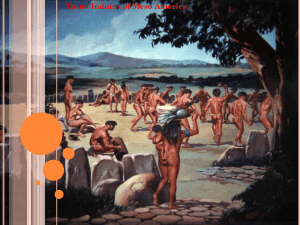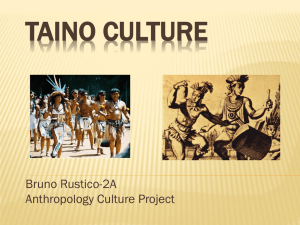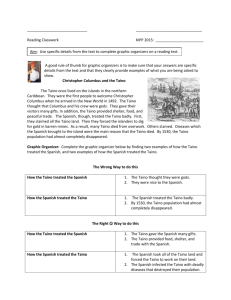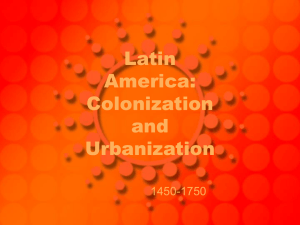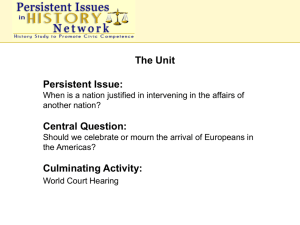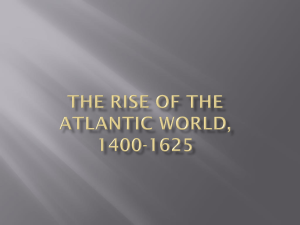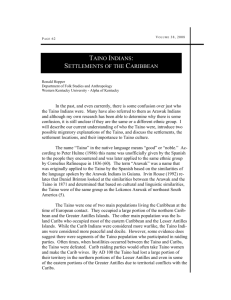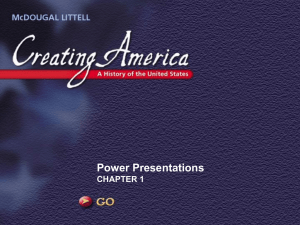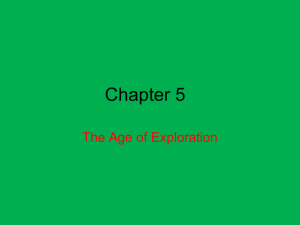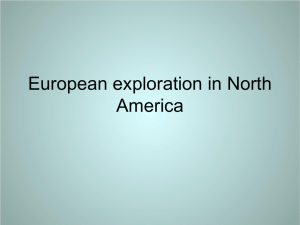PIH_tainoSlides_topi.. - Persistent Issues in History
advertisement
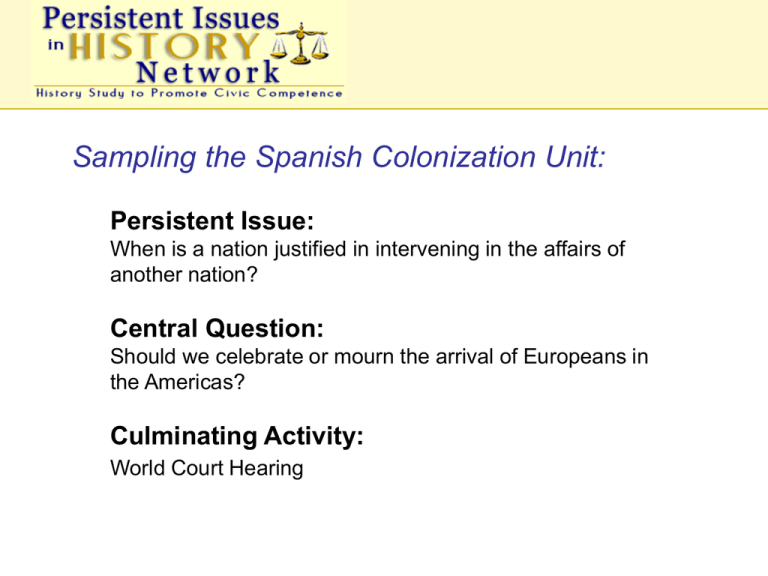
Sampling the Spanish Colonization Unit: Persistent Issue: When is a nation justified in intervening in the affairs of another nation? Central Question: Should we celebrate or mourn the arrival of Europeans in the Americas? Culminating Activity: World Court Hearing Spanish Colonization: Hypothesis Formation Central Question: Should we celebrate or mourn the arrival of Europeans in the Americas? Lesson Focus Question: How did people in Spain and the Caribbean live at the time of initial contact? Spanish Colonization: Hypothesis Formation Purpose: Provide the framing historical and cultural context for inquiry into primary accounts 1. Introduce cultures of Spain, the Caribbean, and Mesoamerica at the time of initial contact. 2.Introduce the historical problem of “how we know”: the perceptions of non-Western cultures of which we have no direct records. 3.Introduce Aztec encounters (for which we have better records) to give some sense of the indigenous peoples’ perspectives Establishing Foundational Knowledge Spanish Colonization of the Americas • Strategy: Interactive Slide Lecture • Hypothesis Formation • Interpreting Archeological Evidence Understanding the Worlds of 1492 Spain & The Taino Who They Met: The Taino World -- 1492 http://www.red-coral.net/ColumbP39.jpg Geography of The Taino World • Originally from South America • Territory more than 1,000 miles east to west • Occupied the Lesser Antilles, Puerto Rico, Bahamas, Hispaniola, Jamaica, and Cuba Rouse, Irving. 1992. The Tainos. New Haven: Yale University Press. P. 6. Taino Political/Social Organization • Confederation style gov’t – Tiered chiefdoms – Alliances of great chiefdoms – Hispaniola: 5 powerful chiefdoms Taino Political/Social Organization • Village Life http://welcome.topuertorico.org/images/bohios.jpg Taino Political/Social Organization http://www.rose-hulman.edu/~delacova/taino/duho-1.gif Taino Political/Social Organization • History (hypothesized) – Internal warfare alternating with periods of alliance and trade – Military stand-off of equal chiefdoms – By 1492, intermarriage among elite to create a pan-Taino ruling class Taino Political/Social Organization http://www.rose-hulman.edu/~delacova/taino/taino-canoe.jpg Taino Political/Social Organization • Economy – Based on agriculture – Skilled use of sea for food & trade http://www.rose-hulman.edu/~delacova/taino/zemi-5.gif Taino Religious Practices • System of Gods: Zemis – Explained how universe was created – Role humans played in the universe – Moral blueprint to guide conduct – Afterlife where good people rewarded Taino Religious Practices http://www.rose-hulman.edu/~delacova/taino/wooden-deity.gif Taino Religious Practices • Two Supreme Deities – Lord of cassava and sea – Goddess of fresh water & human fertility Taino Religious Practices http://www.elmuseo.org/taino/ tainoimages/daily_zemifront.jpg Taino Religious Practices • Representations made from remains of ancestors – Believed powerful spirits in these objects – Cannibalism: Drink made from ground, burned bones of ancestors passed spirit of person to living Taino Religious Practices http://www.rose-hulman.edu/~delacova/taino/wooden-rattle.gif Taino Religious Practices • Religious agricultural feasts • Shamans served as advisors to chiefs Taino Relations with Others • Fought with Island-Caribs who had invaded territory • Expanded influence to outward islands in Caribbean. Resources flowed back to dominant Taino chiefdoms. PIH Curriculum Design Principles 1. Scaffolded Instruction 2. Authenticity 3. Multiple Intelligences 4. Effective Collaboration
